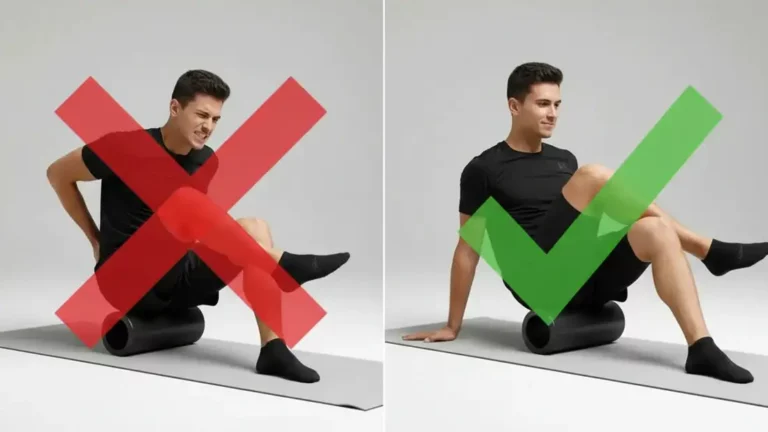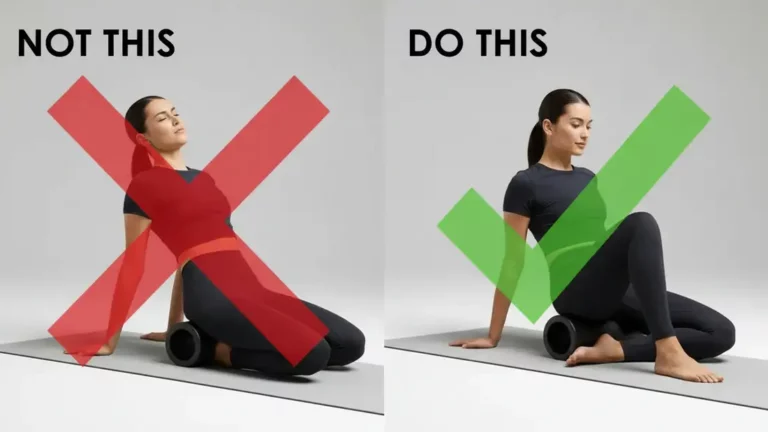Staying active and independent are top priorities for many seniors.
But as we age, our balance can naturally become less steady, increasing the risk of falls. This can lead to injuries, fear, and a decline in overall well-being.
The good news? Balance exercises can significantly reduce these risks and improve your quality of life.
Here’s why incorporating balance equipment into your routine is a smart move, and how to get started safely and effectively.
Why Balance Matters for Seniors
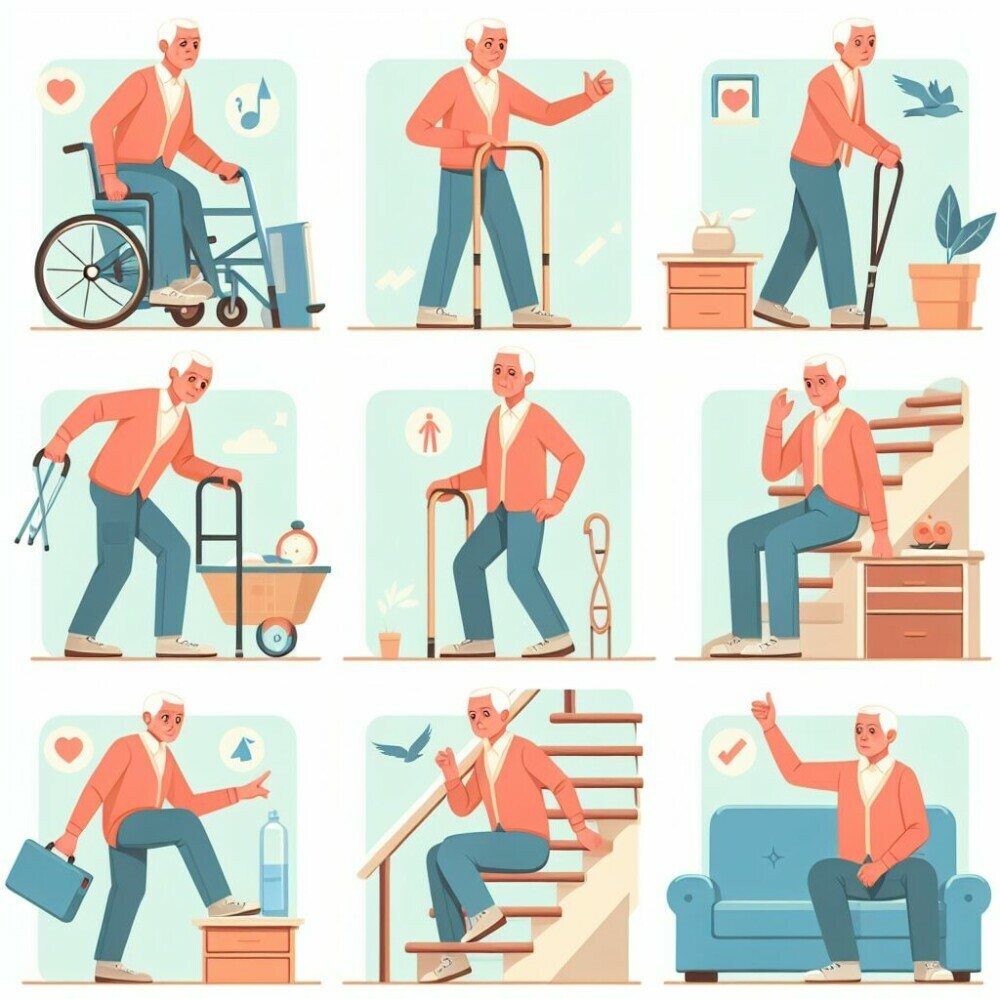
Balance is essential for everyday activities, from walking and climbing stairs to getting dressed and reaching for objects.
When your balance is strong, you move with confidence and reduce your chance of falls.
Here are some key benefits of balance training for seniors:
- Reduced Fall Risk: Falls are a leading cause of injuries and hospitalization for older adults. Balance exercises strengthen the muscles that support your joints and improve your ability to react quickly, significantly reducing your fall risk.
Studies have shown that balance training programs can be particularly effective in reducing falls.
For example, research by Hauer and McLoughlin (2014) described a specific program that demonstrated positive results in improving balance and reducing fall risk in older adults (https://www.ncbi.nlm.nih.gov/pmc/articles/PMC4419050/). - Improved Mobility and Independence: Strong balance allows you to move freely and confidently in your environment. This can help you maintain independence and continue doing the activities you enjoy.
- Increased Confidence: Feeling unsteady on your feet can be a major confidence drain. Balance training strengthens your core and improves body awareness, leading to a renewed sense of confidence and security.
Getting Started with Balance Exercises
The key to successful balance training is to start slow and gradually progress. Here are some tips to get you started safely:
- Consult Your Doctor: Before starting any new exercise program, talk to your doctor to ensure it’s safe for you. They can also provide guidance on appropriate exercises and equipment.
- Begin Simply: Start with basic balance exercises like standing on one leg for short periods. As you get stronger, you can progress to more challenging exercises.
- Find a Supportive Surface: When starting, perform your exercises near a wall or sturdy chair for support in case you lose your balance.
- Balance Equipment for Added Challenge: Once you’re comfortable with basic exercises, consider incorporating balance equipment to add a fun challenge and further improve your skills.
Types of Balance Equipment for Seniors
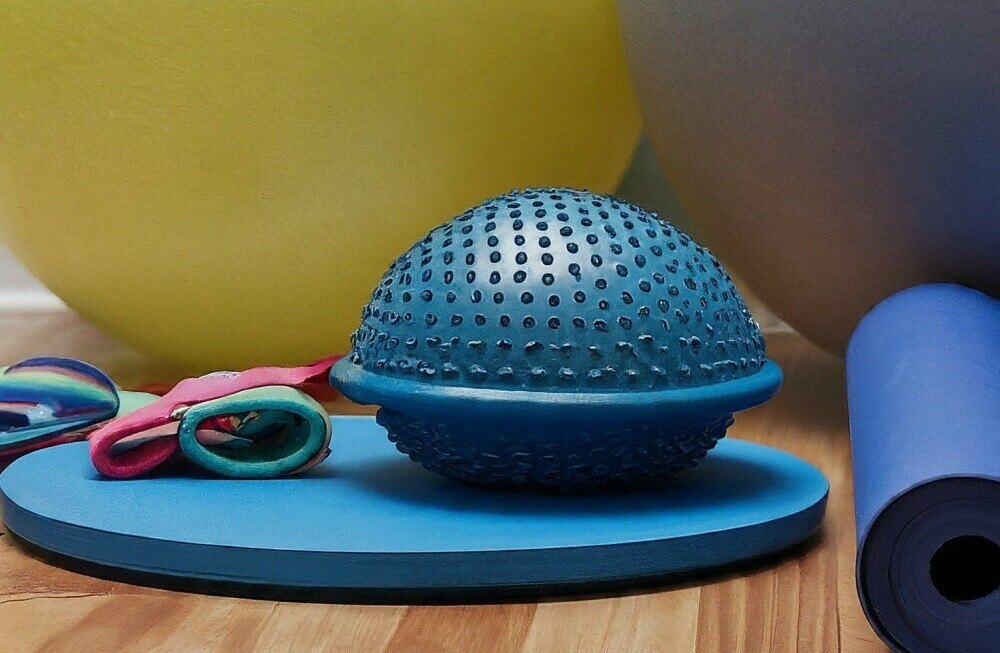
Here are some popular balance equipment options for seniors, along with their benefits and safety considerations:
- Balance Balls: These inflatable balls can be used for a variety of exercises that target core strength, coordination, and balance. Choose a size appropriate for your height and always have a spotter nearby for safety.
- Balance Discs: These small, inflatable cushions add instability to exercises, making them more challenging. They’re a great option for beginners as they provide a lower level of challenge compared to balance balls.
- Resistance Bands: Adding resistance to balance exercises with resistance bands strengthens muscles, further improving your balance.
- Yoga Mats: A yoga mat provides a comfortable and cushioned surface for balance exercises, reducing the risk of injury if you lose your balance. Additionally, it can be used for stretching and other exercises as part of your routine.
Remember:
- Listen to Your Body: Start slowly, pay attention to your limits, and gradually increase the difficulty as you get stronger.
- Focus on Proper Form: Maintaining good posture and proper form during exercises is crucial to maximize benefits and prevent injury.
- Make it Fun!: Choose exercises you enjoy and incorporate them into your daily routine. Consider group exercise classes designed for seniors, which can provide social interaction and motivation.
By incorporating balance exercises and equipment into your routine, you can improve your balance, reduce your risk of falls, and maintain your independence well into your golden years.
So take charge of your health, and start your journey to a stronger, more confident you!
Sample Balance Exercises for Seniors with Equipment
Here are some examples of balance exercises you can try at home using the equipment mentioned earlier:
Balance Ball
Seated Ball Raises
This exercise strengthens your core muscles and improves balance.
Method: Sit on the ball with your feet flat on the floor, hip-width apart. Slowly lift your feet off the ground, balancing on your buttocks for a few seconds.
Hold, then slowly return to the starting position. Repeat 10-12 times.
Ball Walks
This exercise challenges your balance and coordination while strengthening your legs.
Method: Start by placing your forearms on the ball in a push-up position. Slowly walk your feet forward a few inches at a time, maintaining a straight body line. Walk as far as comfortable, then walk back to the starting position. Repeat 3-5 times.
Here is a video which has few exercises with the balance ball.
Balance Disc
Single Leg Stance
This exercise improves balance and stability in your lower body.
Method: Stand on one leg with the other foot placed on the balance disc. Hold for 30 seconds, then switch legs. Repeat 2-3 times per leg.
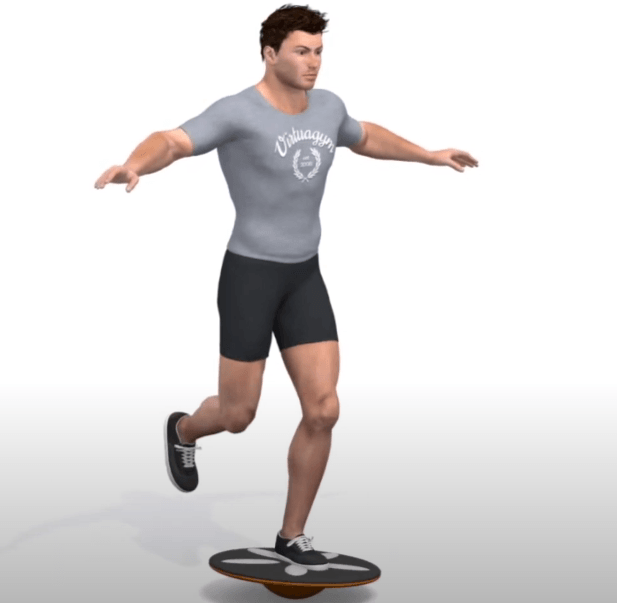
Side Reaches
This exercise challenges your core and improves balance while stretching your sides.
Method: Stand on the disc with your feet shoulder-width apart. Slowly reach one arm overhead while maintaining your balance. Hold for a few seconds, then return to starting position and repeat with the other arm. Perform 3-5 repetitions per side.
Resistance Bands
Squats with Band
This exercise strengthens your legs, core, and improves balance by adding resistance.
Method: Stand on a yoga mat with a resistance band looped around your thighs just above the knees. Perform a squat, keeping your back straight and core engaged. The band will add resistance, challenging your balance. Repeat 10-12 times.
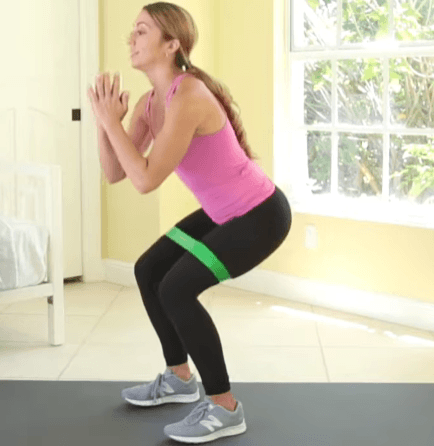
Rows with Band
This exercise strengthens your back muscles and improves core stability.
Method: Stand on a yoga mat with the band secured around a sturdy object at chest height. Hold the band ends with your palms facing down. Pull the band towards your chest, squeezing your shoulder blades. Hold for a few seconds, then slowly release. Repeat 10-12 times.
More exercises with Resistance Bands
Yoga Mat
Heel-Toe Walk
This exercise improves balance and coordination while challenging your focus.
Method: Stand on the mat with your feet together. Take small steps forward, placing your heel directly in front of the toes of your other foot. Maintain good posture and focus on keeping your balance. Continue walking for 30 seconds to 1 minute.
March in Place
This exercise improves balance and cardiovascular health.
Method: Stand on the mat with your feet hip-width apart. March in place, lifting your knees high and engaging your core. Focus on maintaining a steady upper body. March for 30 seconds to 1 minute.
Remember: These are just a few examples. There are many other balance exercises you can do with and without equipment. It’s important to find exercises that suit your fitness level and consult a healthcare professional or certified trainer for personalized guidance.
Additional Tips:
- Start with shorter exercise sessions and gradually increase the duration as you get stronger.
- Aim for at least 30 minutes of moderate-intensity exercise most days of the week, incorporating balance exercises 2-3 times per week.
- Stay hydrated by drinking plenty of water before, during, and after your workouts.
- Wear comfortable, supportive shoes that provide good traction.
- Most importantly, have fun and celebrate your progress!
- Conclusion: Invest in Your Balance, Invest in Your Future
Balance training is an investment in your health and independence. By incorporating these exercises and equipment into your routine, you’re taking a proactive step towards:
- Reduced Fall Risk: Statistics show a significant decrease in falls among seniors who participate in regular balance training. This translates to fewer injuries, hospital stays, and a lower financial burden.
- Improved Quality of Life: Maintaining good balance allows you to navigate your environment with confidence. You can continue doing the activities you enjoy, spend time with loved ones, and live a more fulfilling life.
- Increased Strength and Flexibility: Balance exercises often work multiple muscle groups, improving overall strength and flexibility. This can enhance your daily activities and make you feel more energized.
- Boosted Confidence: Feeling stable and in control of your movements leads to a renewed sense of confidence. You’ll be more likely to try new things and embrace life’s challenges.
Remember, it’s never too late to start!
Begin with simple exercises and gradually progress. There are many resources available online and in your community to help you on your journey.
Talk to your doctor, join a senior fitness class, or find an exercise buddy for motivation.
Invest in your balance, invest in your future. Take charge of your health and start reaping the rewards of a stronger, more confident you!

